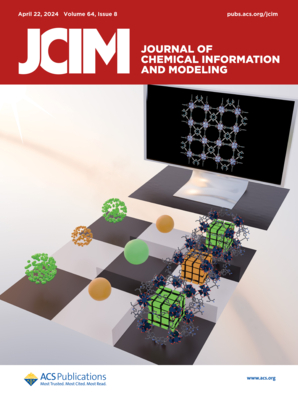改进药物诱导的胆汁淤积预测:一个可解释的共识模型整合化学和生物指纹。
IF 5.3
2区 化学
Q1 CHEMISTRY, MEDICINAL
引用次数: 0
摘要
以3R原则(替代、减少、改进)为指导,最大限度地减少动物试验,有效的药物安全性评估对早期药物开发至关重要。药物性肝损伤(DILI),特别是药物性胆汁淤积(DIC),仍然是一个主要的挑战。本研究介绍了一种预测DIC的计算方法,该方法将PubChem的子结构指纹图谱与肝脏表达靶点和途径的生物学数据结合起来,以及九种肝脏转运蛋白抑制模型。为了解决公共胆汁淤积数据集中的类别不平衡问题,我们采用了欠采样技术,该技术通过评估不同的子集来构建一个小而健壮的共识模型。最有效的基线模型结合了PubChem的子结构指纹图谱、途径数据和肝脏转运蛋白抑制预测,通过10倍交叉验证,其马修斯相关系数(MCC)为0.29,灵敏度为0.79。随后,利用四种公开可用的工具进行目标预测,以丰富稀疏化合物-目标相互作用矩阵。虽然这种方法与实验得出的靶点和途径相比灵敏度较低,但它强调了纳入特定系统生物学相关信息的价值。在我们的预测模型中,特征重要性分析确定白蛋白是与胆汁淤积相关的潜在靶标,这表明两者之间的联系值得进一步研究。通过采用扩展共识模型并应用概率范围滤波,改进方法的MCC为0.38,灵敏度为0.80,提高了决策置信度。该方法通过整合生物和化学描述符来推进DIC预测,提供了一个可靠且可解释的模型。本文章由计算机程序翻译,如有差异,请以英文原文为准。
Refining Drug-Induced Cholestasis Prediction: An Explainable Consensus Model Integrating Chemical and Biological Fingerprints.
Effective drug safety assessment, guided by the 3R principle (Replacement, Reduction, Refinement) to minimize animal testing, is critical in early drug development. Drug-induced liver injury (DILI), particularly drug-induced cholestasis (DIC), remains a major challenge. This study introduces a computational method for predicting DIC by integrating PubChem substructure fingerprints with biological data from liver-expressed targets and pathways, alongside nine hepatic transporter inhibition models. To address class imbalance in the public cholestasis data set, we employed undersampling, a technique that constructs a small and robust consensus model by evaluating distinct subsets. The most effective baseline model, which combined PubChem substructure fingerprints, pathway data and hepatic transporter inhibition predictions, achieved a Matthews correlation coefficient (MCC) of 0.29 and a sensitivity of 0.79, as validated through 10-fold cross-validation. Subsequently, target prediction using four publicly available tools was employed to enrich the sparse compound-target interaction matrix. Although this approach showed lower sensitivity compared to experimentally derived targets and pathways, it highlighted the value of incorporating specific systems biology related information. Feature importance analysis identified albumin as a potential target linked to cholestasis within our predictive model, suggesting a connection worth further investigation. By employing an expanded consensus model and applying probability range filtering, the refined method achieved an MCC of 0.38 and a sensitivity of 0.80, thereby enhancing decision-making confidence. This approach advances DIC prediction by integrating biological and chemical descriptors, offering a reliable and explainable model.
求助全文
通过发布文献求助,成功后即可免费获取论文全文。
去求助
来源期刊
CiteScore
9.80
自引率
10.70%
发文量
529
审稿时长
1.4 months
期刊介绍:
The Journal of Chemical Information and Modeling publishes papers reporting new methodology and/or important applications in the fields of chemical informatics and molecular modeling. Specific topics include the representation and computer-based searching of chemical databases, molecular modeling, computer-aided molecular design of new materials, catalysts, or ligands, development of new computational methods or efficient algorithms for chemical software, and biopharmaceutical chemistry including analyses of biological activity and other issues related to drug discovery.
Astute chemists, computer scientists, and information specialists look to this monthly’s insightful research studies, programming innovations, and software reviews to keep current with advances in this integral, multidisciplinary field.
As a subscriber you’ll stay abreast of database search systems, use of graph theory in chemical problems, substructure search systems, pattern recognition and clustering, analysis of chemical and physical data, molecular modeling, graphics and natural language interfaces, bibliometric and citation analysis, and synthesis design and reactions databases.

 求助内容:
求助内容: 应助结果提醒方式:
应助结果提醒方式:


